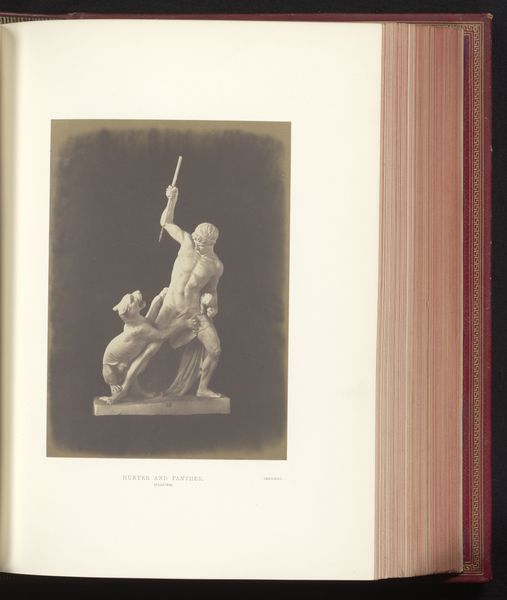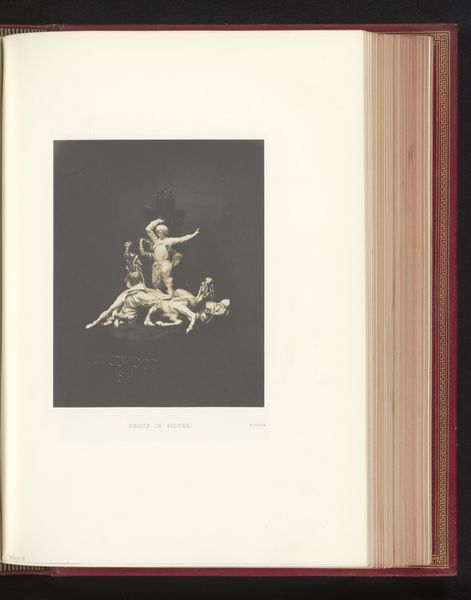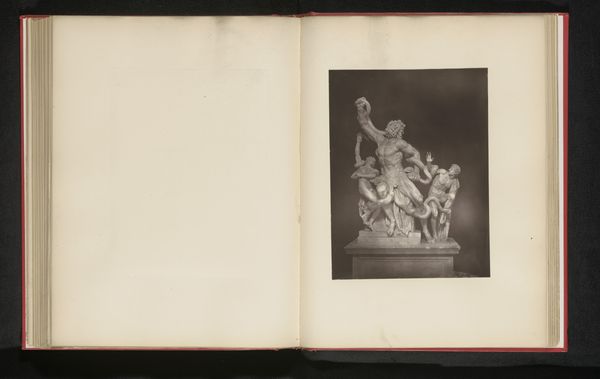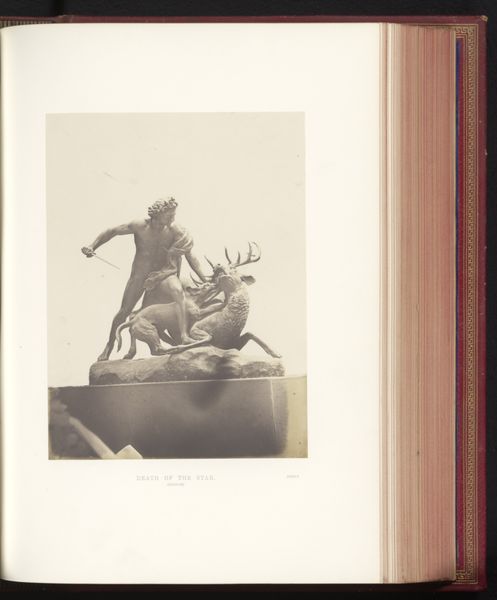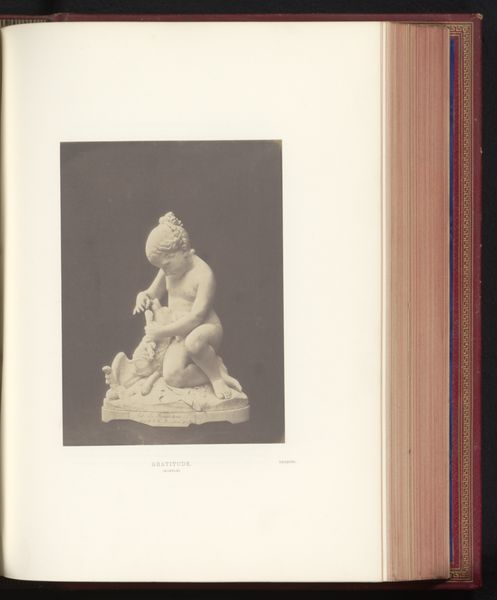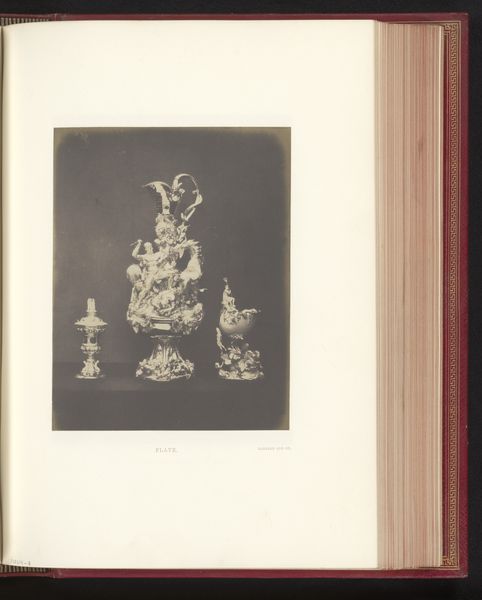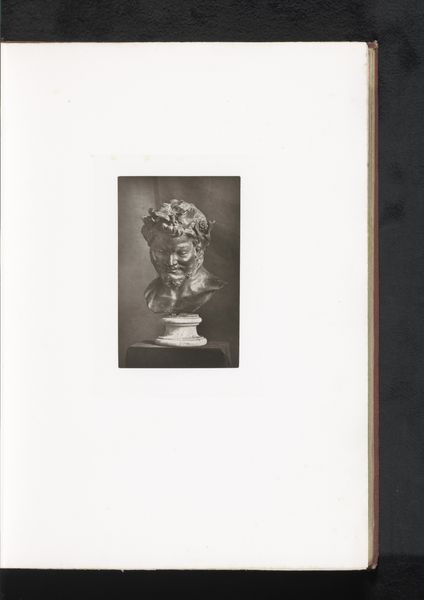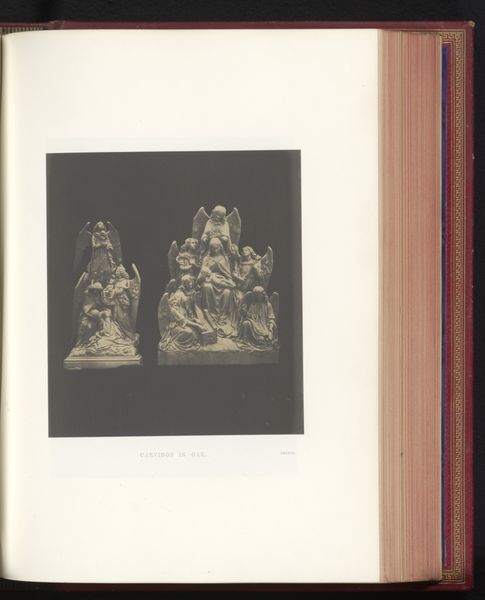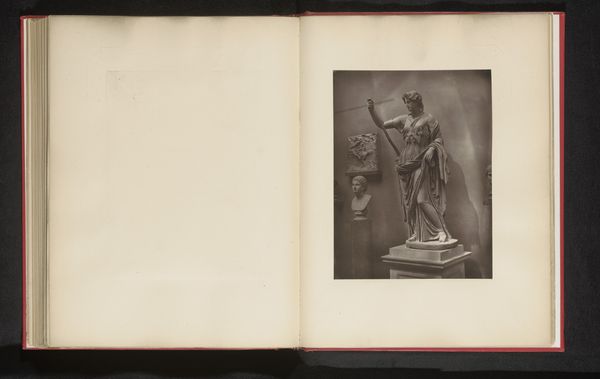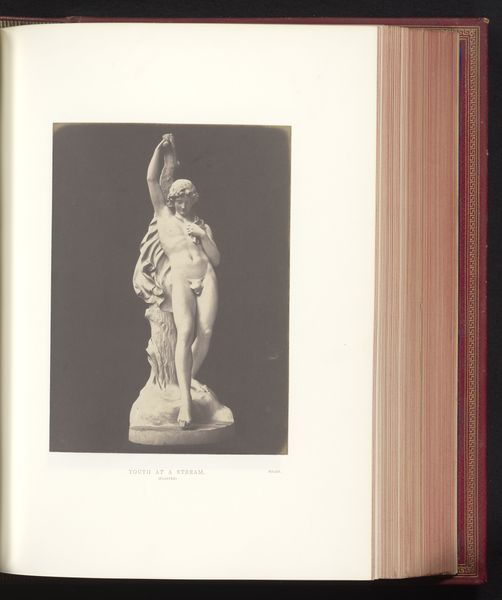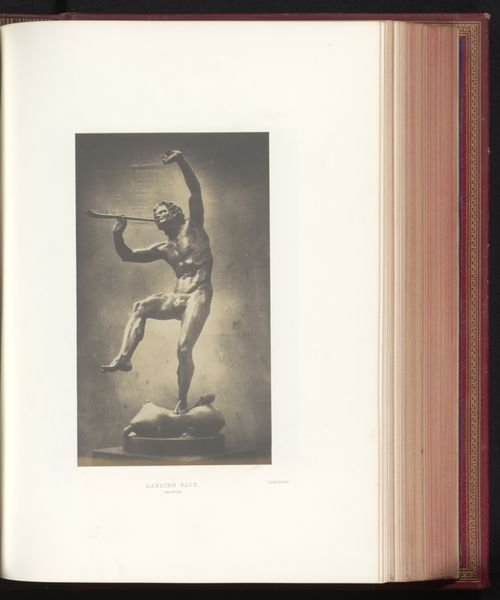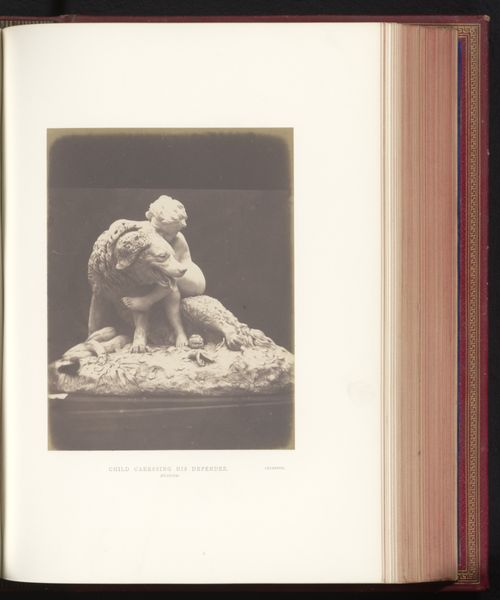
Sculptuur van Gueyton, voorstellend een man met een paard, tentoongesteld op de Great Exhibition of the Works of Industry of All Nations van 1851 in Londen 1851
0:00
0:00
bronze, sculpture
#
greek-and-roman-art
#
bronze
#
figuration
#
sculpture
#
history-painting
#
academic-art
Dimensions: height 199 mm, width 150 mm
Copyright: Rijks Museum: Open Domain
Curator: What a dramatic scene! All that writhing muscle and terrified horse eyes… It’s bordering on operatic, wouldn’t you say? Editor: Indeed! And that's partially by design. Here we have a photo, originally captured in 1851, of a bronze sculpture by a M. Gueyton. It depicts a man and a horse; it was exhibited at the Great Exhibition in London of that year, an event intended to showcase industry of all nations. This moment echoes grand historical paintings and the Neoclassical aesthetic dominating public taste at the time. Curator: So, pure showmanship then, meant to impress more than express, perhaps? Because to me, the theatrics obscure any genuine feeling. The drapery feels… well, draped. And the horse—is it fear or merely bad taxidermy frozen in bronze? Editor: It speaks to the social aspirations of the time. Mass culture, popular imagery and bronze casting, elevated into “art” in international fairs. Think about it: the 1851 Exhibition was all about celebrating the Industrial Revolution and Victorian progress. It placed such pieces into a global stage for both manufacturing and, in this case, art and national identity. Curator: That makes sense. I was definitely responding to its frozen quality, and also feeling kind of ambivalent towards this kind of masculine...show, or, mastery displayed through brute force. The man is almost indistinguishable from the horse and it seems as though this sort of mastery seems as an attempt to suppress any trace of their essence, instead portraying them only from an objective distance. Editor: Absolutely. It embodies a particular era's emphasis on idealized forms and its effort to translate something ancient like greek art, but into a language fitting Victorian ideology of human domination over nature and exoticized history paintings . Curator: Seeing it within that frame certainly helps to soften my initial judgment. I mean, as a snapshot of ambition and societal values frozen in bronze...well, it becomes unexpectedly intriguing. Editor: It really does bring a new context to these sorts of grandiose sculpture from history and opens conversations of class, culture and representation.
Comments
No comments
Be the first to comment and join the conversation on the ultimate creative platform.
